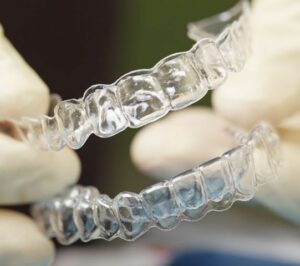
Diastema, or a teeth gap, is when there’s space between teeth, which sometimes adds a touch of character, but is bothersome for most. Diastema happens due to genetics, jaw size, or habits like thumb-sucking. It affects eating and speaking and causes gum issues or decay. Finding effective solutions is vital to enhance oral health, function, and appearance.
One 2011 study revealed that the gap between the two upper front teeth is present in 1.6% to 25.4% of people across different age groups and populations among adults. More importantly, many of them want to fix this issue. Read on to understand the causes of diastema and the treatment options to close the gap between your teeth.
Understanding the Causes of Gap Teeth
Gap teeth, also known as diastema, stem from various factors:
- Genetics: Family members sharing similar gap teeth traits often indicate a genetic link to this dental feature.
- Gum Health: Periodontal or gum disease can instigate the loss of teeth and bone, ultimately creating spaces or gaps between teeth.
- Teeth Size: Discrepancies in tooth size in relation to jaw size, alongside conditions like missing or undersized teeth, may result in gaps between teeth.
- Misalignment Issues: When teeth are not properly aligned, it can result in uneven wear, discomfort in the jaw, and the formation of noticeable gaps between teeth.
- Tissue Overgrowth: An excess of tissue surrounding the gums and upper front teeth can gradually push the teeth apart, creating visible gaps.
- Habits like Thumb Sucking: Certain childhood habits such as thumb-sucking or pushing the tongue against the front teeth can lead to the separation of these teeth, causing spaces or gaps to form.
Addressing Self-Esteem and Social Impacts
Teeth gaps, known as diastema, profoundly impact self-esteem. Those with such gaps often feel self-conscious and embarrassed and refrain from smiling, causing social anxiety. Aesthetic worries linked to these gaps dent confidence, leading to emotional discomfort.
A study from the Journal of Orthodontic Science reveals that teeth gaps can reduce self-esteem. This shows that societal views often equate misaligned teeth with a lack of responsibility, affecting how individuals are perceived socially.
Resolving these gaps through modern orthodontics improves oral health and restores confidence, enabling individuals to engage socially and freely share their smiles.
Non-Invasive Options for Fixing Teeth Gaps
Non-invasive options for fixing teeth gaps encompass treatments that avoid surgery or tooth removal. Orthodontic treatment includes aligners. Aligners reposition the teeth, gently addressing gaps and other issues. According to a comprehensive study published in the book “Current Approaches in Orthodontics,” orthodontic treatments are a great choice for fixing gaps between teeth.
The other two non-invasive methods are dental bonding and retainers. The first one applies tooth-colored resin to close gaps. It’s simple, durable, and yields good results. Retainers aid in maintaining teeth alignment post-treatment, ensuring the closure of gaps and long-term success.
Aligners -The Optimal Choice
Aligners are a favored choice in dentistry for correcting gap teeth owing to their non-invasive approach and versatility in managing different gap sizes. They can effectively tackle mild to moderate gap sizes, catering to various cases.
Dentists recommend top aligners such as Byte as they offer a non-invasive alternative to traditional braces. By being removable, bypassing the use of metal brackets or wires. Tailored to each person, these aligners gradually close gaps and align teeth precisely. Their near-invisibility makes them discreet, particularly appealing to those concerned about aesthetic impacts.
Top 3 Aligner Products for Gap Teeth



Choose the aligner that meets your unique needs and budget, and get ready to unveil the smile you’ve always dreamed of! If you’re ready to close the gap with invisible aligners, worry not! We’ve explored several reputable aligner brands and came up with the top three to help you fix your teeth gap with confidence.
1. Byte:
The gold standard among aligners, Byte offers lightning-fast treatment plans (as quick as 4 months!) Byte utilizes smart technology and remote monitoring, so you can ditch the in-office visits and conquer your gap on your own terms. For an inside scoop into its features, pricing, and benefits, dive into our Byte review.
One of the reasons for asserting Byte is that it triumphs aligners made by other brands in several aspects. Whether it’s the HyperByte technology to help seat the aligners properly or easy financing options, Byte beats its competitors with a clear edge, as mentioned in our Byte vs SmileDirect product comparison.
2. AlignerCo:
On a quest for a flawless smile without breaking the bank? AlignerCo is your budget-savvy smile architect. Their transparent pricing and flexible payment plans make achieving your dream smile a reality, not a pipe dream. But is it a good fit for your specific gap-closing needs?
3. Candid Aligners:
Candid takes aligner treatment to a whole new level of precision. They prioritize a collaborative approach, partnering with your dentist to craft a personalized treatment plan tailored to your specific smile goals. Through high-resolution photos and virtual check-ins, your dentist can monitor your progress remotely, ensuring optimal results.
Dental Bonding
Dental bonding is a common cosmetic method for closing small gaps between teeth. It involves applying a tooth-colored composite resin to the teeth, effectively filling the spaces. This procedure is straightforward, relatively quick, and can be completed in a single visit to the dentist.
One of the pros of dental bonding is that it offers a cost-effective solution to address minor gaps, providing natural-looking results that blend seamlessly with the rest of the teeth.
Retainers
Retainers serve as an aid in mild gap correction by applying gentle pressure to guide teeth into alignment. After orthodontic treatment, dentists recommend using retainers to maintain the achieved position, closing small gaps over time. Clear aligners or vacuum-formed retainers, when combined with elastics, can effectively address minor gaps.
Invasive Options for Tooth Gap Correction
Dentistry offers invasive options for fixing tooth gaps that involve treatments that include surgery or changes to your teeth. These methods can be more complicated and might need extra care for the patient afterward. Some invasive options are:
- Dental Implants or Bridges: These cosmetic dentistry procedures involve more intrusive procedures for missing teeth. Dental implants put a metal screw in the jaw, while bridges attach a fake tooth to the site of the missing teeth to fix gaps.
- Frenectomy: A surgery to adjust the upper lip tissue, helping close the gap between the front upper teeth.
- Gum Surgery: Sometimes needed to treat gum disease-causing gaps. Procedures like gum flap or graft surgery might be necessary.
- Crowns: Cover the whole tooth, filling the gap and improving how the tooth looks and works.
- Orthodontic Treatment (Braces): While less invasive, braces gently move teeth to address severe diastema.
- Dental veneers: Veneers are thin porcelain shells covering flaws and gaps, suitable for larger gaps and a more cost-effective option than crowns.
Braces
Traditional braces stand as a reliable choice in dentistry for more severe dental gaps. They’re effective in correcting significant gaps and complex alignment issues. Unlike aligners, braces use metal brackets and wires to shift teeth into place gradually.
You can weigh the difference between braces and aligners to get valuable insights into their functions and suitability for different dental needs.
Veneers
Veneers offers another swift cosmetic dentistry solution for instant gap closure by placing thin shells over teeth, masking gaps, and creating a seamless appearance. However, this method doesn’t physically close gaps but covers them cosmetically.
If you’re comparing veneers with aligners for gap treatment, look into this article on veneers vs Invisalign to see which way to fix the gap suits your dental needs better.
Dental Crowns
Dental crowns serve as a viable way to fill larger gaps by covering the entire tooth. They effectively fill gaps and enhance both the appearance and function of the tooth. Unlike some other methods, crowns provide comprehensive coverage for gapped teeth, offering stability and durability.
Teeth Gap Aftercare Tips
Apart from learning about how to fix tooth gaps via non-invasive and invasive methods, it is important to know about the correct ways to keep the teeth closure fixed. Here are practical tips:
For Non-invasive Methods:
- Stick to the guidance given by your dentist or orthodontist to uphold the treatment’s results.
- Schedule check-ups to ensure the gap closure remains intact and address emerging issues promptly.
- Brush and floss regularly to prevent gum disease and decay, maintaining the treatment’s effectiveness.
- Discontinue habits like thumb-sucking to prevent the gap from returning.
For Invasive Methodologies:
- Adhere to post-surgery instructions from your dentist for proper healing and long-term success.
- Follow recommended cleaning routines, especially for dental implants and veneers, to maintain results.
- Uphold excellent oral hygiene to prevent complications like gum disease that might affect treatment outcomes.
- Steer clear of habits like teeth grinding and consider using a mouthguard if needed to protect the results.
Final Words
In exploring ways to fix gaps in teeth, various options stand out. Non-invasive choices like veneers, bonding, and clear aligners offer effective solutions. However, aligners emerge as a standout choice. They provide a non-invasive and efficient way to close gaps, offering discreet treatment with tailored results.
Consider aligners as a prime option for resolving gaps, ensuring a confident smile, and improving dental health without invasive procedures.
Key Takeaways
Here I have emphasized the importance of choosing the right method, aligners being a prime choice, for closing gaps and achieving a healthier, more confident smile.
Tooth gap fixing, notably through non-invasive methods like aligners, plays a crucial role in enhancing dental health and self-esteem. Aligners stand out as an optimal choice due to their efficiency, tailored treatment, and discreet nature.



